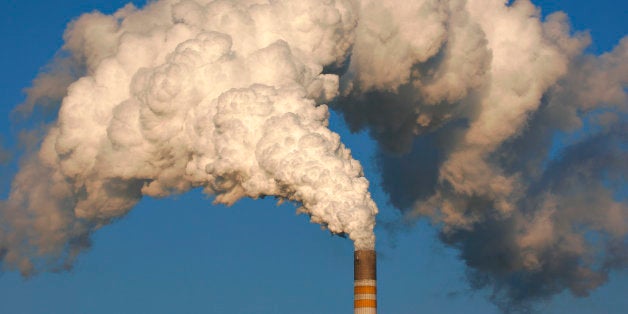
Will the new EPA carbon standards reduce pollution affordably while unleashing innovation? Or will they be a job-killing tax, leaving "Our pocketbook... lighter, but our country... darker," as Republican Senator Michael Enzi of Wyoming warns? And, will they meet their intended mark, of significantly cutting the emissions of greenhouse gases?
The history of energy and environmental progress argues that getting policy right makes all the difference. The best policies spur innovation and encourage the market to find creative solutions; this has always produced amazing results at far lower costs than anticipated. George H. W. Bush's Clean Air Act Amendments cut acid rain in half at one-tenth the projected cost, saving our nation's lakes and rivers. This virtuous dynamic has been evident in everything from airbags to catalytic converters on cars (99 percent pollution reduction!), from refrigerator energy consumption (80 percent reduction) to home energy consumption (75 percent reduction in new houses, in California).
Bad policy locks in old technology through "Grandfather clauses," specifies particular technology approaches, or tries to build customized regulations for every company and situation. This approach creates enormous costs.
The difference lies in the design of the standards. So how does Obama's new policy fare? Five simple tests should be applied. Do they:
1.Reward performance, or instead specify technology?
2.Take into account that states have different starting points?
3.Reward those who find the lowest price and highest benefit? Allow the public and private sectors optimize across a range of solutions?
4.Reward new technology?
5.Create long-term certainty and ensure continuous improvement?
So, judging the EPA by these criteria, how did do they do? It looks like they nailed it.
First, the EPA set a clear performance benchmark: CO2 per kilowatt-hour. They capped the pollution you can emit for every unit of electricity you produce. And then they drive that number down, steadily over time. That makes common sense: Tell the market what public good you want (less pollution), and let the market find the best way to meet it.
Second, the new standards recognize the vastly different starting points of our 50 states. They require each state to reduce pollution on a continuing basis, starting where they are today. The third item, rewarding those who find the lowest price and highest benefit, depends on how the new standards are implemented in each state, and here there is room for brilliance or foolishness. The states will use their Public Utilities Commissions (PUC) to fashion this plan, in the form of utility regulations. If a state rewards electric utilities for finding the cheapest reductions, using both supply (power plant) and demand (energy efficiency) solutions, they can do this while saving money. But unless a utility can share in the economic benefit of these savings, it is unlikely to pursue them. So states who seek to make this an economic win will have to revamp utility incentives.
The EPA regulations also take a systems approach. Instead of trying to reduce CO2 emissions in every power plant (which is difficult and expensive), they allow states to shut down the dirtiest plants, switch from coal to gas, or to renewables, pursue energy efficiency or even trade clean energy credits with other states. The EPA is encouraging states to optimize across the entire electricity supply and demand system.
All of which will meet the fourth criteria -- spurring a wave of technology innovation, and in energy, technology is the trump card. The only way to solve global warming is to drastically cut energy waste and then produce what we need with zero-carbon technologies. New LED lights use only one-fifth the energy of their predecessors, and last 20 times as long. California is moving to zero-net energy in new residential construction by 2020, and that is partly enabled by solar panels, which have dropped 80 percent in price in the last five years. The climate challenge is winnable -- if we keep that dynamic going. The EPA standards are specifically designed with technology innovation in mind.
Finally, one must think about the duration of the program. Any CEO will tell you that planning certainty drastically reduces costs, as managers can deploy R&D funds, build factory lines, and develop products in anticipation of public standards. Continuous improvement is the core element of technological innovation. It is rare to see long-term certainty and continuous improvement in government regulations, but the EPA program has them built in from the start.
The new EPA standards will be a political brickbat in the coming months, and it will be hard to have a rational conversation above the din. Before the crescendo hits, remember: We are a nation of inventors and innovators. If we focus, we can solve the climate problem -- and own the energy technologies of the future.